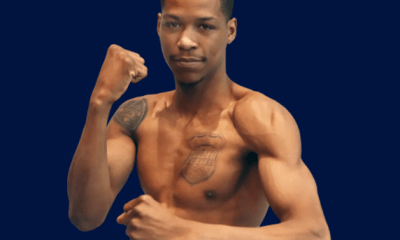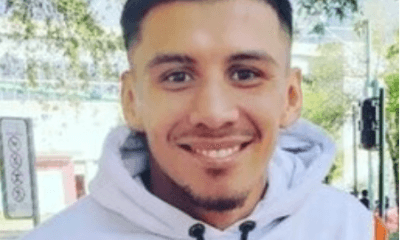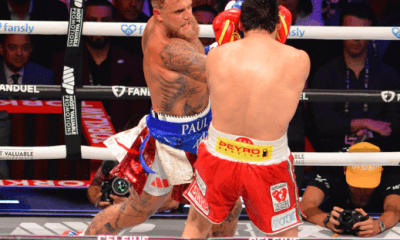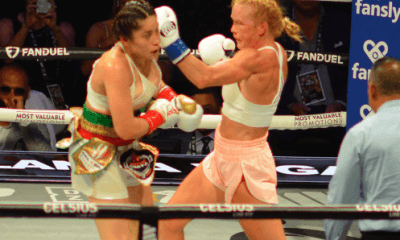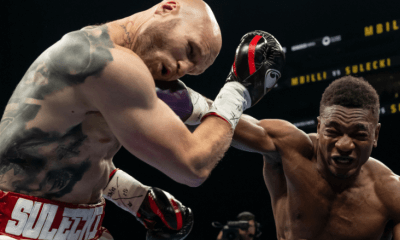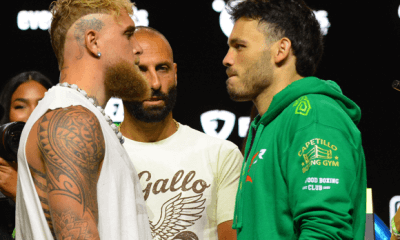Featured Articles
Avila Perspective, Chap. 284: Tyson Fury, Oleksandr Usyk, and Much More
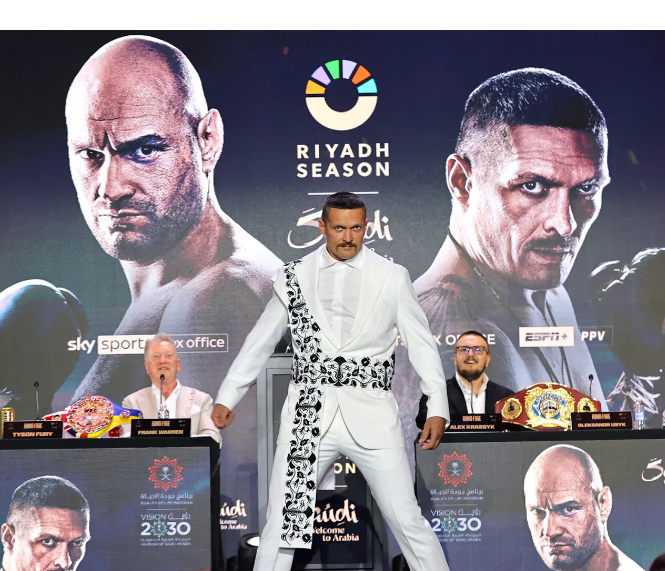
Avila Perspective, Chap. 284: Tyson Fury, Oleksandr Usyk, and Much More
Argue all you want about the appeal of other sports, only boxing grabs fans on all levels and stratum.
It’s the oldest sport that has an international swag that only the World Cup can rival once every four years. Boxing has it every year.
Heavyweights take the forefront in Saudi Arabia while lightweights battle in Southern California. It’s an all-day affair pitting champions from all parts of the world.
Tyson Fury (34-0-1, 24 KOs), the WBC and lineal heavyweight champion, finally meets Oleksandr Usyk (21-0, 15 KOs) who holds the IBF, WBA and WBO heavyweight titles on Saturday, May 18, at Riyadh. DAZN ppv, ESPN ppv, and PPV.Com will stream the massive fight card at 9 a.m. PT/ 12 p.m. ET.
It’s a rare opportunity to decide who truly is the “baddest man on the planet.” Ever since the emergence of the alphabet titles, few know the name of the heavyweight champion. Not since Mike Tyson ruled the prize ring could fans tell you the name of the champ.
Some people still think Tyson is the heavyweight champ.
Now we have England’s “Gypsy King” Fury ready to prove that he indeed is the biggest and baddest of all the heavyweights in the world. He’s got his dad head-butting people to prove it.
“I predict that somebody’s ‘0’ has got to go. And it’s going to be that team over there, unfortunately for them,” said Tyson Fury who at six-feet, nine-inches tall towers over most opponents.
Facing Fury is Usyk, the Ukrainian fighter who twice defeated Anthony Joshua for several versions of the heavyweight championship.
Though several inches shorter and much lighter in weight, Usyk has displayed mobility and agility that allows him to dart in and out of danger. Will this tactic work against Fury?
“I have a plan. It’s a better plan. And it’s a great plan,” said Usyk. “I will have the opportunity to become undisputed for a second time.”
Of course, size doesn’t always matter when it comes to heavyweights. History has taught us the bigger man doesn’t always win. From Jack Dempsey whipping Jess Willard to Joe Frazier beating Buster Mathis, size doesn’t dictate the winner when it comes to heavyweights.
Top Rank’s Bob Arum summed up the importance of this heavyweight clash.
“After this fight, there is one ‘Baddest Man on the Planet,’ the undisputed heavyweight champion. That means everything in the sport of boxing. That means everything for fans who love boxing,” said Arum.
Two other world titles fights are also planned.
IBF super featherweight titlist Joe Cordina (17-0, 9 KOs) defends against Anthony Cacace (21-1, 7 KOs).
Cordina was seen in Santa Monica, California sparring various super featherweights in preparation for this match. His last match against Texan Edwin Vazquez was a squeaker but you can never tell what the Welsh fighter will do.
Who can forget his two-round demolition of Japan’s Kenichi Ogawa?
Cruiserweights also battle. IBF titlist Jai Opetaia (24-0, 19 KOs) of Australia defends against Latvia’s Mairis Briedis (28-2, 20 KOs). This is a rematch. They fought two years ago with Opetaia winning by decision in Australia. Can Opetaia do it again in neutral territory?
PPV.Com
Headlining the PPV.COM announcing crew for the Fury-Usyk card will be Dan Canobbio, Chris Algieri and Kevin Iole. They will be commentating and also discussing the fight via text on social media.
It’s been almost a year since this this style of reporting was adopted. Fans like the opportunity to discuss the fight with the experts.
San Diego Fights
Three-division world champion Emanuel Navarrete (38-1-1, 31 KOs) attempts to become a four-division world champion when he meets Ukraine’s Denys Berinchyk (18-0, 9 KOs) for the vacant WBO lightweight title on Saturday, May 18, at Pechanga Arena in San Diego, Calif. ESPN will televise.
The Mexican fighter known as “El Vaquero” seeks to become the sixth Mexican fighter with four division world titles and join the prestigious elite. Among those accomplishing the feat are Saul “Canelo” Alvarez, Juan Manuel Marquez, Erik Morales, Jorge Arce and Leo Santa Cruz.
Navarrete barely survived his last fight with a majority draw against Robson Conceicao last November in Las Vegas. Perhaps the extra five pounds will help?
On the co-main event welterweight contender Giovani Santillan (32-0, 17 KOs) of San Diego returns home to face Georgia’s Brian Norman (25-0, 19 KOs) for the interim WBO welterweight title.
Santillan, 32, is coming off a big knockout win over Alexis Rocha last year. The southpaw has always stepped up when bigger and better competition confronts him. Can he do it again?
Norman, 23, is a hard-hitting welterweight who fought 16 times in his first two years. Many of those fights took place in Mexico. It’s a big test for him.
East L.A. Fights
Super featherweights Dariial Kuchmenov (7-0) and Daniel Lugo (5-2) meet Saturday May 18, at Salesian High School in East Los Angeles. The Elite Boxing USA promotions card begins at 6 p.m. The card features several other bouts including female fighter Mayra Ruiz.
For tickets go to www.tix.com/ticket-sales/eliteboxing/7
18th & Grand Exhibit
The final day to visit the “18th & Grand” exhibit takes place on Sunday May 19, at La Plaza De Cultura Y Artes located at 501 N. Main Street in downtown Los Angeles 90012. The exhibit is free.
Inside you will find photos and art of the Olympic Auditorium that was the center of boxing, wrestling, roller derby, and rock concerts for decades.
For boxing fans, its where the sport showcased the likes of Henry Armstrong, Baby Arizmendi, Art Aragon, Jerry Quarry, Mando Ramos, Scrap Iron Johnson, Art Hafey, and many others.
The exhibit is free of charge.
Jake Paul vs Mike Tyson
Tickets went on sale this week for the return of Iron Mike Tyson who will face Jake Paul in a heavyweight match commissioned as an actual fight.
Most Valuable Promotions will stage Tyson versus Paul along with the rematch between Katie Taylor and Amanda Serrano on July 20, at AT&T Stadium in Arlington, Texas. Netflix will stream the card live.
A number of other bouts are planned for the mega event.
Paul’s first actual boxing match took place when Tyson fought Roy Jones Jr. in Los Angeles several years ago.
“I started Jake off and I’m gonna finish him,” promised Tyson when they fight.
Paul said he respects Tyson like family.
“I love you like a father loves his son, but I must discipline you. You’re going down, man,” said Paul.
Fights to Watch
Sat. PPV.COM 9 a.m. Tyson Fury (34-0-1) vs Oleksandr Usyk (21-0).
Sat. ESPN, 7:30 p.m. Emanuel Navarrete (38-1-1) vs Denys Berinchyk (18-0).
To comment on this story in the Fight Forum CLICK HERE
-

 Featured Articles3 weeks ago
Featured Articles3 weeks agoAvila Perspective, Chap. 330: Matchroom in New York plus the Latest on Canelo-Crawford
-

 Featured Articles2 weeks ago
Featured Articles2 weeks agoVito Mielnicki Jr Whitewashes Kamil Gardzielik Before the Home Folks in Newark
-
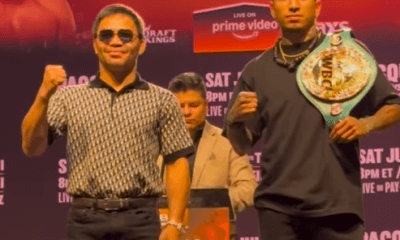
 Featured Articles4 weeks ago
Featured Articles4 weeks agoAvila Perspective, Chap 329: Pacquiao is Back, Fabio in England and More
-
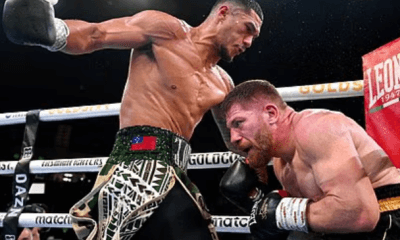
 Featured Articles3 weeks ago
Featured Articles3 weeks agoOpetaia and Nakatani Crush Overmatched Foes, Capping Off a Wild Boxing Weekend
-

 Featured Articles2 weeks ago
Featured Articles2 weeks agoCatching Up with Clay Moyle Who Talks About His Massive Collection of Boxing Books
-

 Featured Articles4 weeks ago
Featured Articles4 weeks agoFabio Wardley Comes from Behind to KO Justis Huni
-

 Featured Articles1 week ago
Featured Articles1 week agoMore Medals for Hawaii’s Patricio Family at the USA Boxing Summer Festival
-
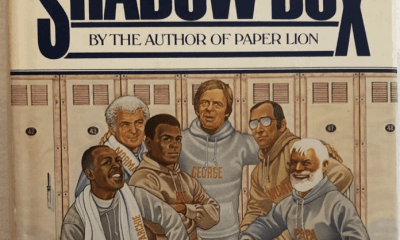
 Featured Articles4 weeks ago
Featured Articles4 weeks agoDelving into ‘Hoopla’ with Notes on Books by George Plimpton and Joyce Carol Oates

